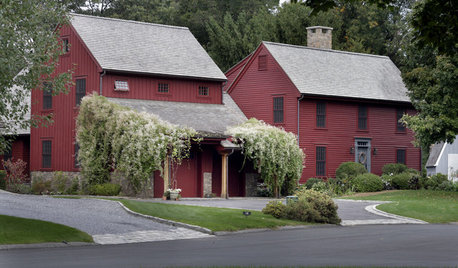Good liquid fungicide to help prevent brown patch
carillon
9 years ago
Related Stories

RUGSPrevent Slips and Floor Damage With the Right Rug Pad
Here's what to know about sizes, materials, costs and maintenance of this important companion to your area rugs
Full Story
PETS6 Ways to Help Your Dog and Landscape Play Nicely Together
Keep your prized plantings intact and your dog happy too, with this wisdom from an expert gardener and dog guardian
Full Story
GARDENING AND LANDSCAPINGBid Bad Garden Bugs Goodbye and Usher In the Good
Give ants their marching orders and send mosquitoes moseying, while creating a garden that draws pollinators and helpful eaters
Full Story
FARM YOUR YARDHello, Honey: Beekeeping Anywhere for Fun, Food and Good Deeds
We need pollinators, and they increasingly need us too. Here, why and how to be a bee friend
Full Story
GARDENING GUIDESHow to Fix Bare and Yellow Lawn Spots
Restore your turf’s good looks by reseeding unsightly patches
Full Story
GREAT HOME PROJECTSReady to Repaint Your Home’s Exterior? Get Project Details Here
Boost curb appeal and prevent underlying damage by patching and repainting your home’s outer layer
Full Story
GARDENING FOR BUTTERFLIESGardening for the Bees, and Why It’s a Good Thing
When you discover how hard bees work for our food supply, you may never garden without them in mind again
Full Story
EDIBLE GARDENSNatural Ways to Get Rid of Weeds in Your Garden
Use these techniques to help prevent the spread of weeds and to learn about your soil
Full Story
MONTHLY HOME CHECKLISTSYour Fall Home Maintenance Checklist
Prep your house and yard for cold weather with this list of things to do in an hour or over a weekend
Full Story
GREAT HOME PROJECTSHow to Give Your Driveway and Front Walk More Curb Appeal
Prevent injuries and tire damage while making a great first impression by replacing or repairing front paths
Full StoryMore Discussions







agrocoders
dchall_san_antonio
Related Professionals
Tempe Landscape Architects & Landscape Designers · Vernon Hills Landscape Architects & Landscape Designers · Sahuarita Landscape Architects & Landscape Designers · Bergenfield Landscape Contractors · Emmaus Landscape Contractors · Hoffman Estates Landscape Contractors · Morrisville Landscape Contractors · Pueblo West Landscape Contractors · Quincy Landscape Contractors · Saint George Landscape Contractors · West Chicago Landscape Contractors · Hawaiian Gardens Landscape Contractors · Shenandoah Landscape Contractors · Englewood Swimming Pool Builders · Tucson Swimming Pool Buildersagrocoders
dchall_san_antonio
jdo053103
agrocoders